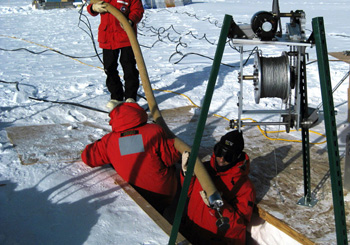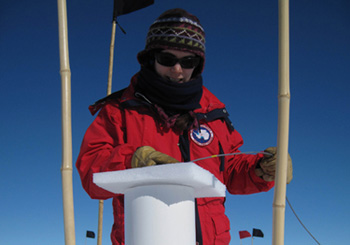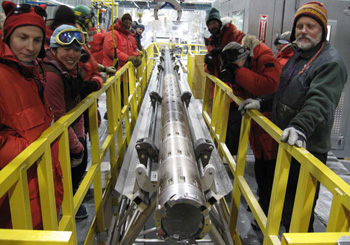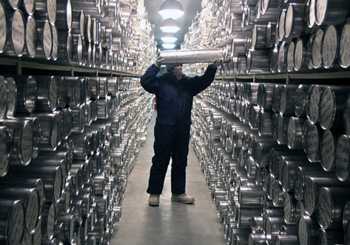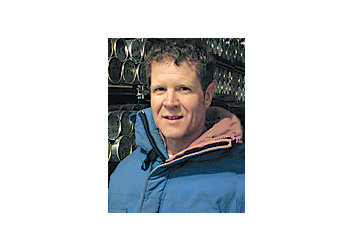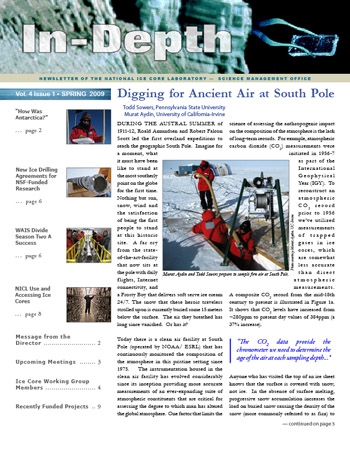- In-Depth Newsletter
- Spring 2009
Spring 2009
Digging for Ancient Air at South Pole
By Todd Sowers, Penn State University and Murat Aydin, University of California–Irvine
During the austral summer of 1911-12, Roald Amundsen and Robert Falcon Scott led the first overland expeditions to reach the geographic South Pole. Imagine for a moment, what it must have been like to stand at the most southerly point on the globe for the first time.
"How Was Antarctica?"
By Anais Orsi, Scripps Institution of Oceanography
When people ask me "How was Antarctica?", I inevitably respond, "It was white!" WAIS Divide resembles most deep ice coring field camps: the white ice sheet extends to the horizon like a frozen sea.
New Ice Drilling Agreements for NSF-Funded Research
The Ice Drilling Program Office (IDPO) and the Ice Drilling Design and Operations group (IDDO) were established by the National Science Foundation effective October 2008 to coordinate long-term and short-term planning in collaboration with the greater U.S. ice science community, and to be the principle supplier of ice drilling and ice coring support and expertise for NSF-funded research.
WAIS Divide Season Two A Success
By WAIS Divide Science Coordination Office
Despite a two-week delay due to budget cuts and heavy equipment problems at camp, the second field season of the West Antarctic Ice Sheet (WAIS) Divide Ice Core Project was extremely successful.
NICL Use and Accessing Ice Cores
The U.S. National Ice Core Laboratory (NICL) is a government-owned facility on the grounds of the Denver Federal Center. NICL provides approximately 50,600 cubic feet of safeguarded freezer space, which is maintained at a temperature of -35 degrees C for the storage of ice cores collected from the polar ice sheets and glaciers from around the world.
Message from the Director - Spring 2009
By Mark Twickler, NICL-Science Management Office, University of New Hampshire
Every few years we like to remind the community about the policies for the use of the National Ice Core Laboratory and acquisition of samples from the archive. You can read about these policies, which have been in place for more than 10 years, on page 8 of this issue and visit the link to read the complete policy.

